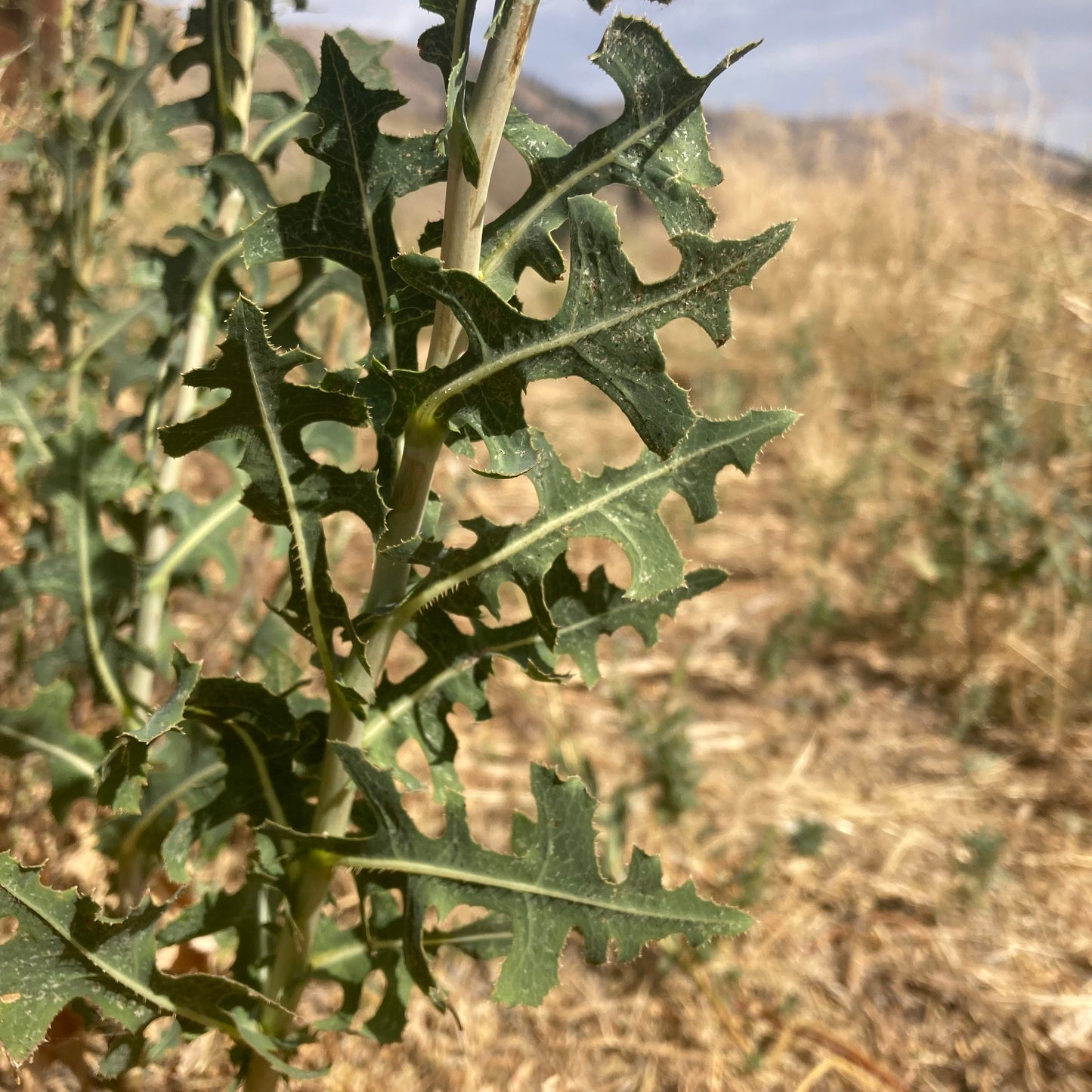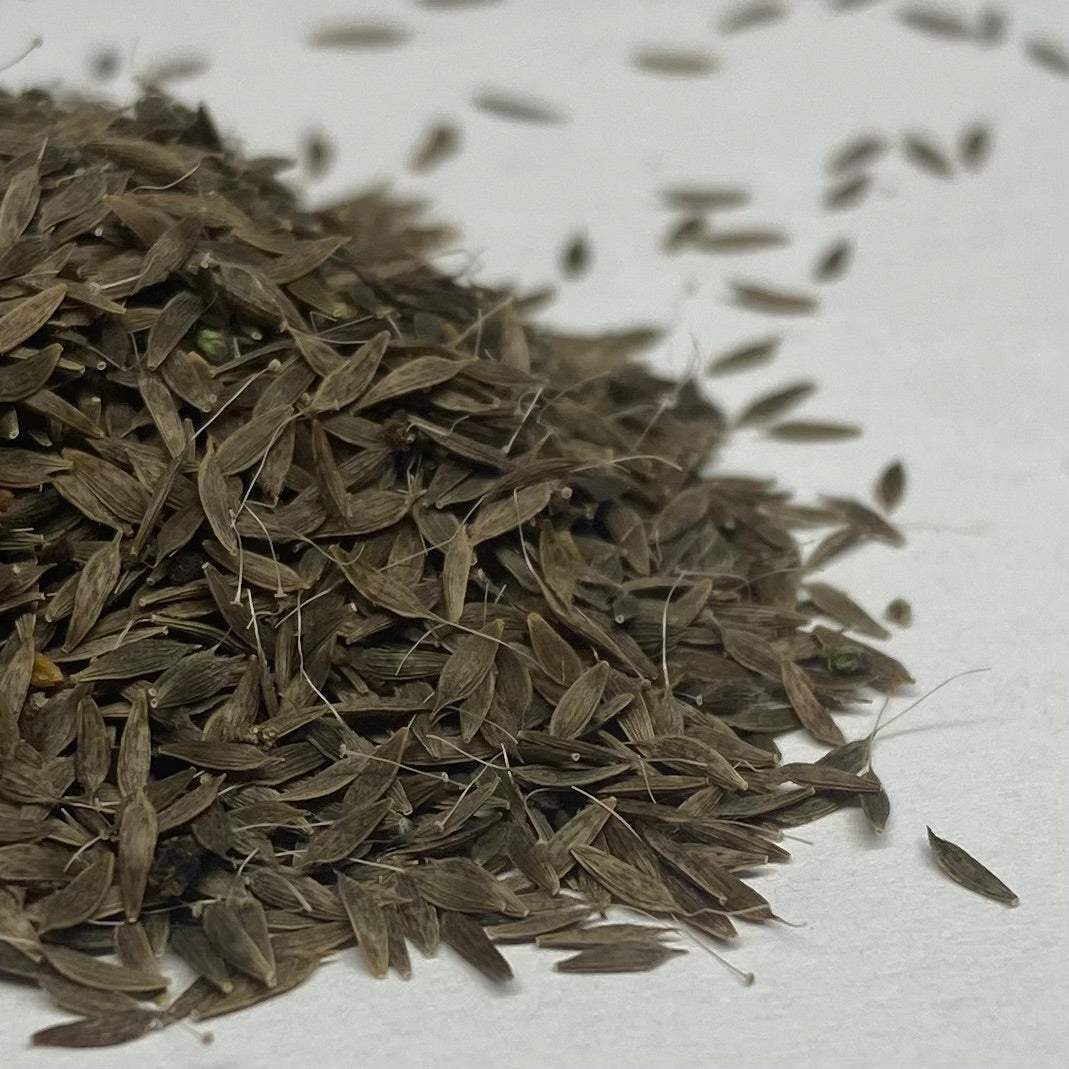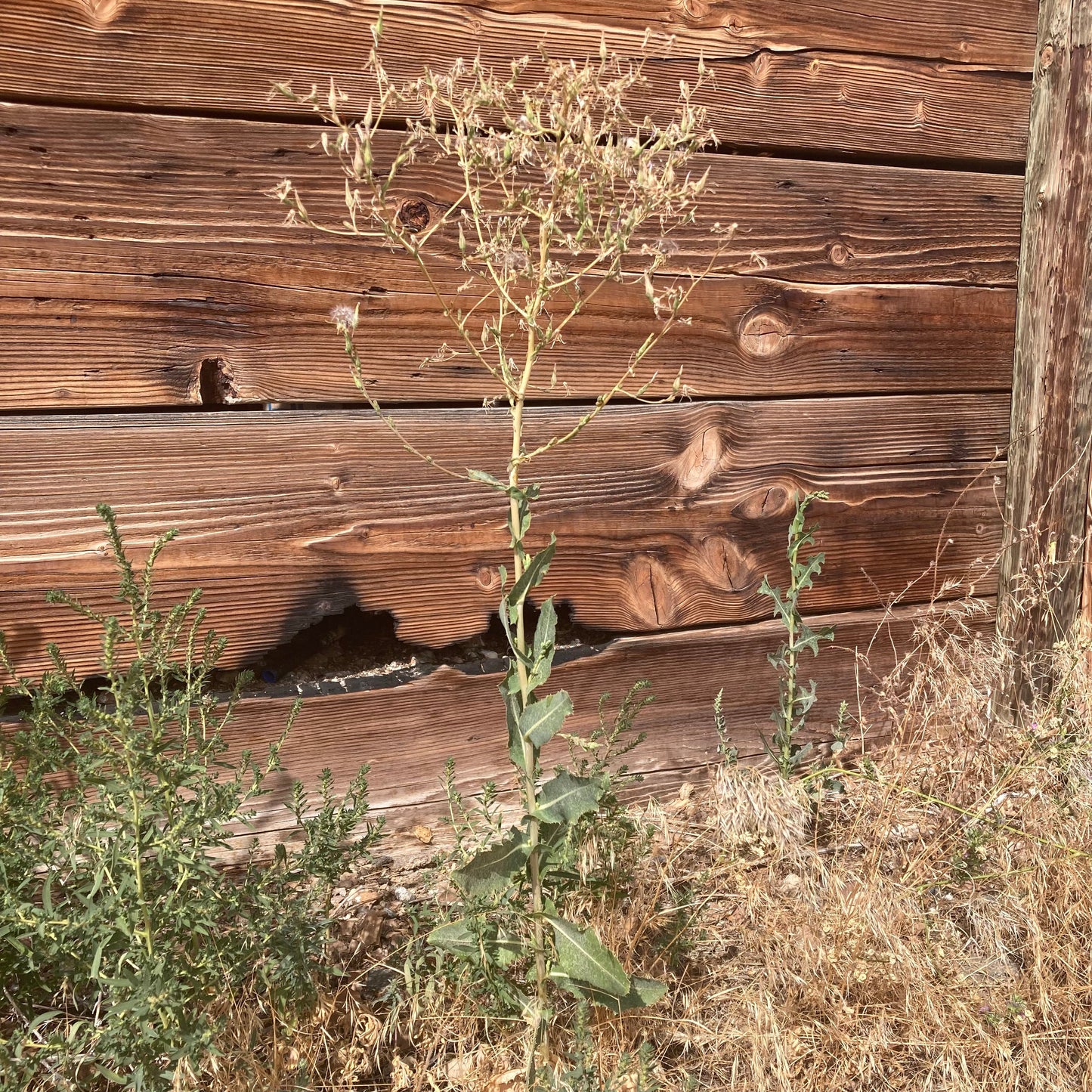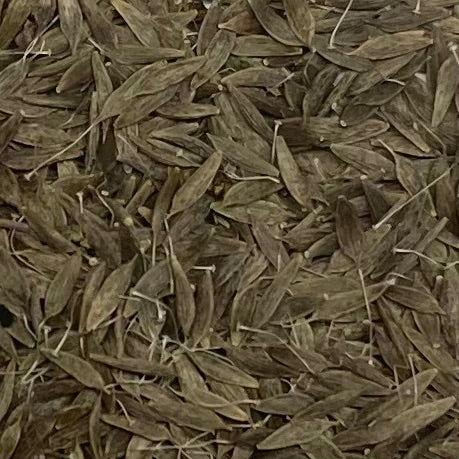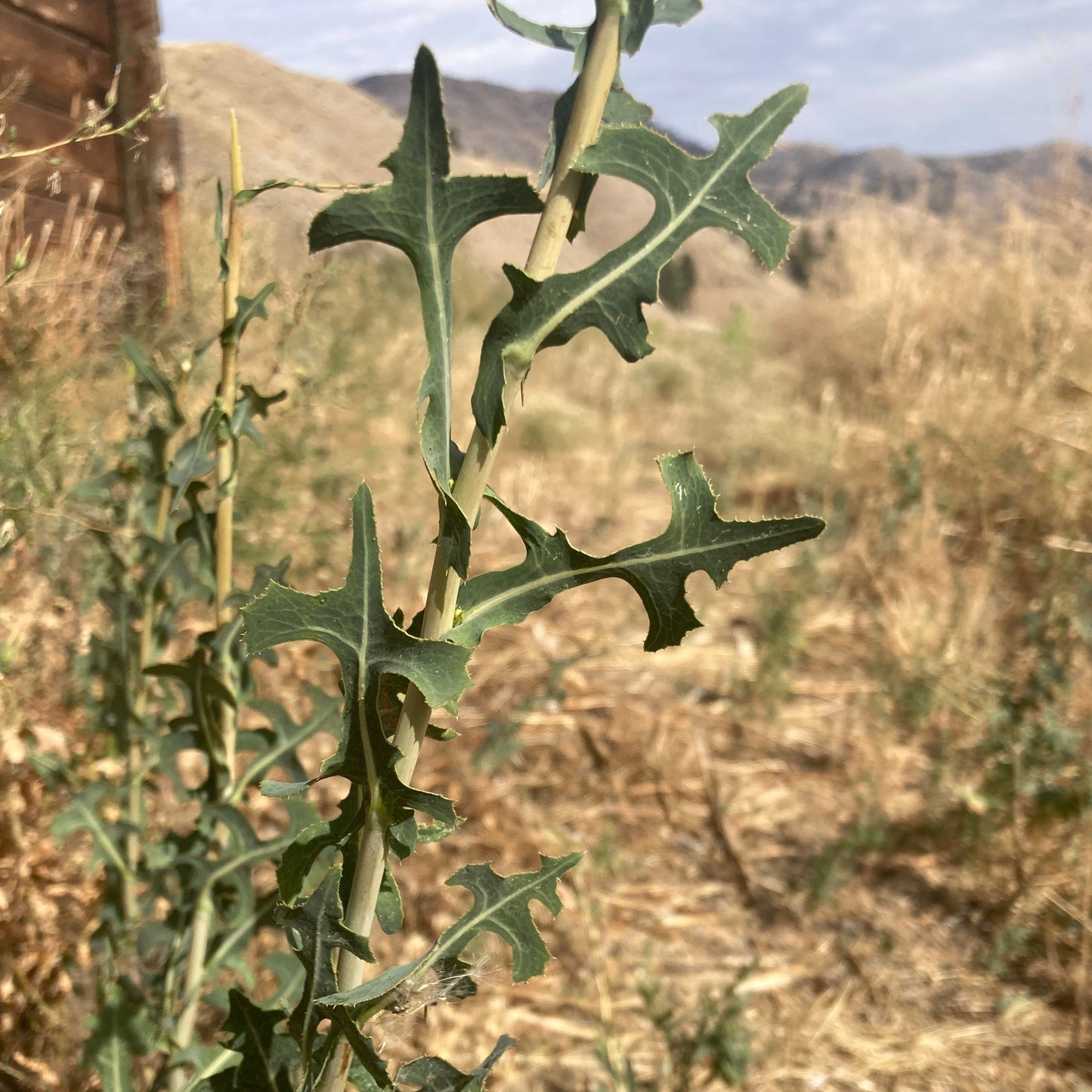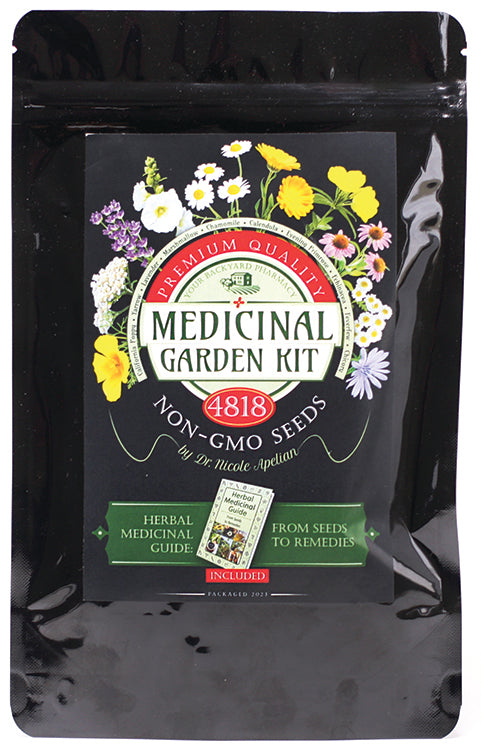Lettuce, Prickly (Lactuca serriola)
Couldn't load pickup availability
*Designated an invasive species in the following states, no sale: AK
Prickly Lettuce, native to the Mediterranean region, gained the common name of ‘Compass Plant,’ for its good sense of direction— the leaves on the main stem are always arrayed in a north-south plane, perpendicular to the direction of the sun. Like other members of the sunflower family, they produce a milky latex when injured or broken, and have fluffy seed heads (not dissimilar to its relatives dandelion and sow thistle). Their small yellow blossoms swaying in the areas designated as wastelands are a brightening reminder that summer is high, and life is finding a way to exist all over. Typically designated as a weed, Lactuca serriola is most often found along fields, nurseries, and roadsides. Their blooms are well-appreciated by bees, especially in early spring, and caterpillars of certain moth species enjoy browsing on their leaves. Take care in planting Wild Lettuce alongside grain plants, as it tends to flower concurrently to grain harvest, and the flowerheads can be both difficult to separate out from grains and clogging to harvest machines with their sticky latex.
There is thought that our cultivated lettuce, Lactuca sativa, was bred from Prickly Lettuce thousands of years ago in Egypt. As a wild edible, this species is rather bitter, and best consumed young. These greens are a welcome cleanse after a season of heavy storage foods once spring emerges, and they have their second flush of choice eating leaves in the autumn. This plant is sometimes referred to as ‘Wild Opium’ or ‘Opium Lettuce,’ on account of its being said to have sedating and pain-relieving properties. The source of this is lactucarium found in the white latex within the plant, and an infusion can be taken to ease anxiety and promote sleep. However, one should take care in not consuming this plant to excess, as improper preparation can result in drowsiness or restlessness.
While Prickly Lettuce appears in lore from both ancient Egypt and Mesopotamia, its better known spotlight features in the Greek myth of Aphrodite and Adonis. The goddess of love, devastated at a bear slaying her mortal paramour, laid him to rest on a bed of Prickly Lettuce (some versions say he was slain on the lettuce). From that, Lactuca serriola developed a symbolic connection to the dead, and on some accounts, male impotency. Still, fortune rose with Lactuca serriola when Roman Emperor Augustus credited a miraculous recovery from illness to a diet of both its greens and juice.
